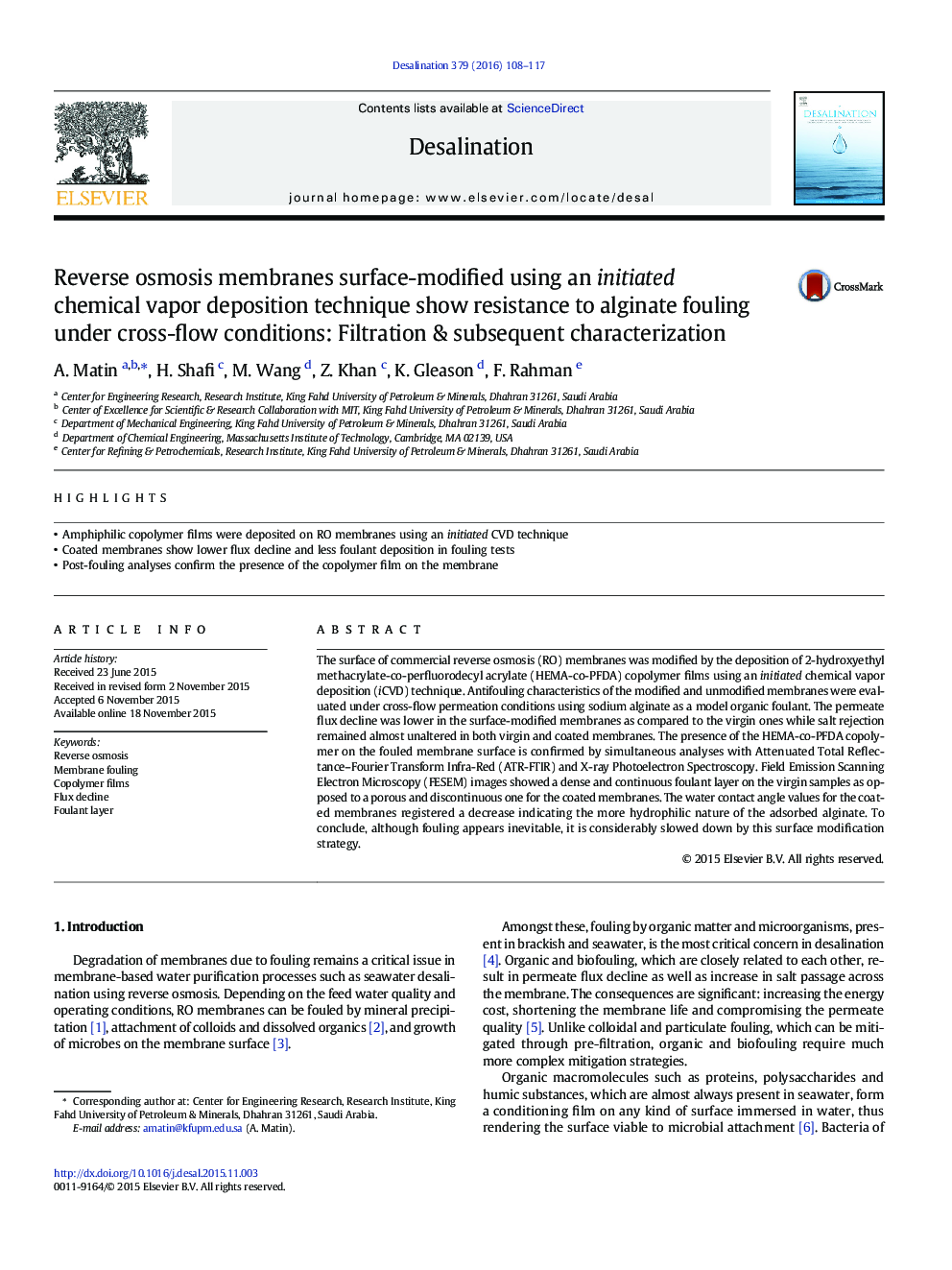| Article ID | Journal | Published Year | Pages | File Type |
|---|---|---|---|---|
| 622925 | Desalination | 2016 | 10 Pages |
•Amphiphilic copolymer films were deposited on RO membranes using an initiated CVD technique•Coated membranes show lower flux decline and less foulant deposition in fouling tests•Post-fouling analyses confirm the presence of the copolymer film on the membrane
The surface of commercial reverse osmosis (RO) membranes was modified by the deposition of 2-hydroxyethyl methacrylate-co-perfluorodecyl acrylate (HEMA-co-PFDA) copolymer films using an initiated chemical vapor deposition (iCVD) technique. Antifouling characteristics of the modified and unmodified membranes were evaluated under cross-flow permeation conditions using sodium alginate as a model organic foulant. The permeate flux decline was lower in the surface-modified membranes as compared to the virgin ones while salt rejection remained almost unaltered in both virgin and coated membranes. The presence of the HEMA-co-PFDA copolymer on the fouled membrane surface is confirmed by simultaneous analyses with Attenuated Total Reflectance–Fourier Transform Infra-Red (ATR-FTIR) and X-ray Photoelectron Spectroscopy. Field Emission Scanning Electron Microscopy (FESEM) images showed a dense and continuous foulant layer on the virgin samples as opposed to a porous and discontinuous one for the coated membranes. The water contact angle values for the coated membranes registered a decrease indicating the more hydrophilic nature of the adsorbed alginate. To conclude, although fouling appears inevitable, it is considerably slowed down by this surface modification strategy.
